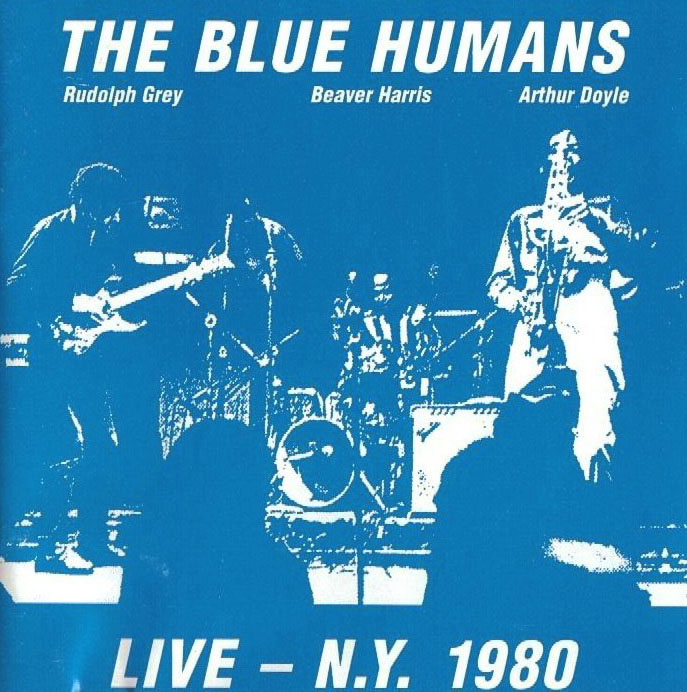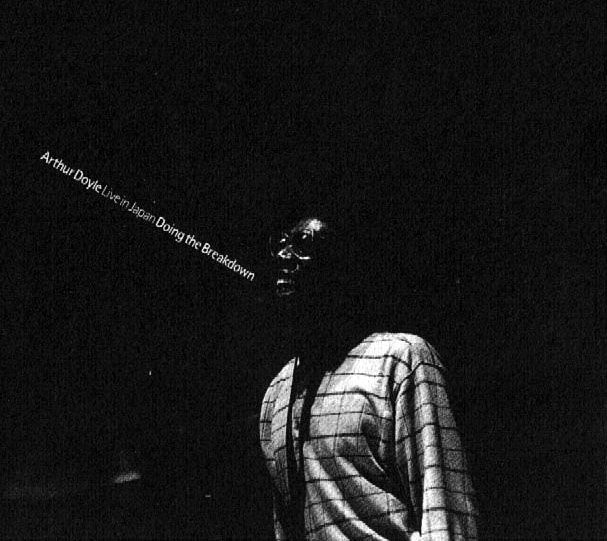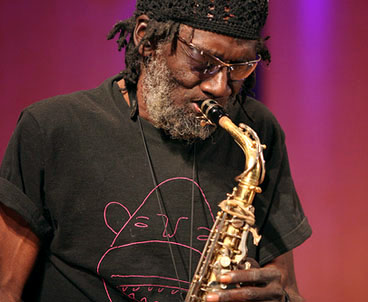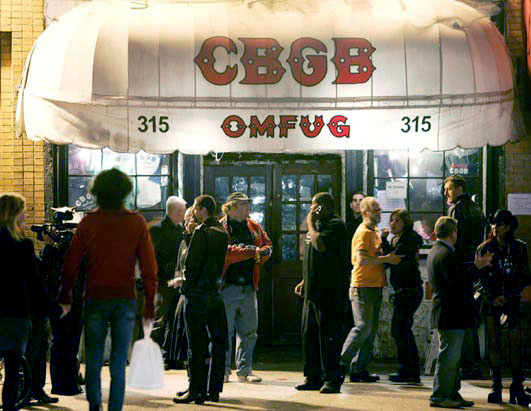24\08\2011
Written by Narayana

Arthur Doyle: this is the story of all of us
[pro-player width=’448′ height=’376′]http://www.youtube.com/watch?v=_wLlllF5dGQ[/pro-player]
 When Arthur Doyle takes the stage later next month he’ll be joined by nine younger musicians who were just new to this world as he was introducing downtown punks to the blasting white heat of his horn in New York City clubs like CBGBs and Hurrah in the early 1980’s.
When Arthur Doyle takes the stage later next month he’ll be joined by nine younger musicians who were just new to this world as he was introducing downtown punks to the blasting white heat of his horn in New York City clubs like CBGBs and Hurrah in the early 1980’s.
To say that Arthur has been disregarding the linear concreteness of the genres he conflates with unique mastery and confounding critical analysis of his sound for the last five decades is nothing new. He seems to relish doing this. The brilliance of his sound springs from the inability to define it, so I will not attempt to. Pick up gems like Alabama Feeling, The Blue Humans Live – NY 1980 and Nature Boy and hear for yourself the basis of this assertion.
written by Robert Peterson
 As I’ve listened to Doyle over the years I’ve come to realize that there is a highly nuanced system of organization within his music that is crucially human and accessible. He lays a foundation of pattern and line, much like an etude; it’s a seedbed from which the composition grows. A great example of this is the version of “African Queen” from Live in Japan Doing the Breakdown. The first few minutes of the song are foundational, patternistic and narrative at the same time. After he lays out the blueprint he voices a brief history of Nefertiti and Cleopatra, which lays into its own pattern. The composition returns to its foundational pattern which gives way to a few bars of saxophonic scalar warmth, before reaching the highest registers for a series of skronkified noise blasts. Each aesthetic decision becomes the precondition for the next. The noise blasts frame the scales and sustained warmth and the patterns define the delivery method of the narrative. His voice and his instrument reach synthesis, something he calls the “Voice-o-phone”, when he sings or speaks into the soft reed of his horn creating a bleating cry that one might produce when confronted with the avalanche of a history of which he has become the inheritor. The work is historical, medicinal, inconsistent and devoid of hyperbole or ego. It is a human affair exploring the relationship between sound, noise and music. My sense is that this is precisely why it has continued to seed over and over again in successive generations.
As I’ve listened to Doyle over the years I’ve come to realize that there is a highly nuanced system of organization within his music that is crucially human and accessible. He lays a foundation of pattern and line, much like an etude; it’s a seedbed from which the composition grows. A great example of this is the version of “African Queen” from Live in Japan Doing the Breakdown. The first few minutes of the song are foundational, patternistic and narrative at the same time. After he lays out the blueprint he voices a brief history of Nefertiti and Cleopatra, which lays into its own pattern. The composition returns to its foundational pattern which gives way to a few bars of saxophonic scalar warmth, before reaching the highest registers for a series of skronkified noise blasts. Each aesthetic decision becomes the precondition for the next. The noise blasts frame the scales and sustained warmth and the patterns define the delivery method of the narrative. His voice and his instrument reach synthesis, something he calls the “Voice-o-phone”, when he sings or speaks into the soft reed of his horn creating a bleating cry that one might produce when confronted with the avalanche of a history of which he has become the inheritor. The work is historical, medicinal, inconsistent and devoid of hyperbole or ego. It is a human affair exploring the relationship between sound, noise and music. My sense is that this is precisely why it has continued to seed over and over again in successive generations.
 While Doyle has been dancing around the boundaries of popular musical forms he has gained a following from younger generations of musicians looking for new ways to find freedom in their sound. The ensemble that will join him at Issue Project Room next month consists predominantly of the Brooklyn-based band NYMPH. It’s easy to hear vibrations sympathetic to Doyle’s sound in the work of NYMPH. Highly organized and layered sounds are the keystones of both oeuvres. Conflation of blocks of sonic pattern on top of one another, underlie both sounds. The voice-instrumentation synthesis found on NYMPH songs like “ii-Yo” and “Snow Song” is similar to Doyle’s use of voice-horn reflective constructions in “African Queen” and “Ozy Lady Dozy Lady”. The transitions are free and wild at times in both sounds, yet it would be naive to equate these moments in either sound to pure chaos. There is order here. The magnificence of the compositions of both NYMPH and Doyle lie in the complexity of their algorithmic topography.
While Doyle has been dancing around the boundaries of popular musical forms he has gained a following from younger generations of musicians looking for new ways to find freedom in their sound. The ensemble that will join him at Issue Project Room next month consists predominantly of the Brooklyn-based band NYMPH. It’s easy to hear vibrations sympathetic to Doyle’s sound in the work of NYMPH. Highly organized and layered sounds are the keystones of both oeuvres. Conflation of blocks of sonic pattern on top of one another, underlie both sounds. The voice-instrumentation synthesis found on NYMPH songs like “ii-Yo” and “Snow Song” is similar to Doyle’s use of voice-horn reflective constructions in “African Queen” and “Ozy Lady Dozy Lady”. The transitions are free and wild at times in both sounds, yet it would be naive to equate these moments in either sound to pure chaos. There is order here. The magnificence of the compositions of both NYMPH and Doyle lie in the complexity of their algorithmic topography.
 What will transpire on stage a month from now in Brooklyn is a progressively deep, nuanced and warm conversation between friends that remains outside the bounds of our 26-letter alphabet. The thing that I find endlessly inspiring about Arthur is that he is without prejudice in considering who he will play with and he is as giving an artist as I’ve ever met. My sense is that what the audience will be privy to that night will be a reflection on the influence of a venerated, yet painfully under-recognized, artist on yet another generation of sound makers, artists and genre wanderers.
What will transpire on stage a month from now in Brooklyn is a progressively deep, nuanced and warm conversation between friends that remains outside the bounds of our 26-letter alphabet. The thing that I find endlessly inspiring about Arthur is that he is without prejudice in considering who he will play with and he is as giving an artist as I’ve ever met. My sense is that what the audience will be privy to that night will be a reflection on the influence of a venerated, yet painfully under-recognized, artist on yet another generation of sound makers, artists and genre wanderers.
Catch Arthur Doyle and friends at Issue Project Room in New York City on Thursday, September 22nd at 8pm, tickets $10.
Robert Peterson is an artist and curator from Louisiana who works primarily with sound, vernacular architecture and the archeology of trash.

